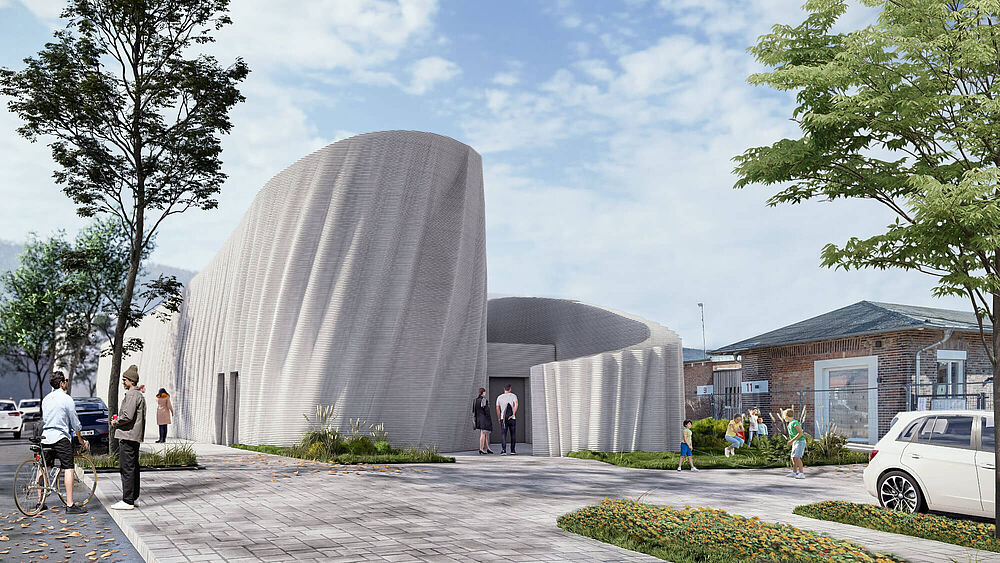Munich - Following Germany's first printed house, a consortium of Mense-Korte and SSV Architekten are now dedicating themselves to Europe's largest printed building. For the design of a server hotel for Heidelberg iT, the planning offices relied on, among other things, the software of ALLPLAN, a provider of BIM solutions for the AEC industry.
Mense-Korte ingenieure + architekten are the German pioneers of 3D printing in construction and are known for Germany's first 3D-printed house in Beckum. In Heidelberg, their expertise in additive construction is now in demand for another pioneering project: together with SSV Architekten as ARGE, the planning and construction supervision for the printing of a server hotel for Heidelberg iT is being created. This is the first time in the world that 3D printing technology has been used in industrial construction. At the same time, this is the largest printed building in Europe to date. For the architects, the project offers the opportunity to further explore the potential of the new construction method. In at least one respect, the process has already been further developed since the house in Beckum.
"For us as pioneers in 3D printing, using Allplan is a key advantage. It not only supports us in realizing unique and innovative building projects like this one, but also allows us to further maximize the potential of this new construction method," says Waldemar Korte, architect and partner at Mense-Korte.
170 hours printing time for the building shell
The new building is an impressive 54 meters long, 11 meters wide, and 9 meters high. Printing has been in progress since March 31, with the shell of the building to be completed by the end of July. According to the client KRAUSGRUPPE, the pure printing time is only 170 hours, while only two construction workers are needed on the building site. According to architects Waldemar Korte (Mense-Korte) and Jan van der Velden-Volkmann (SSV Architekten), this construction method requires considerably more discipline. The special attraction of the technology, on the other hand, lies in the fact that 3D printing can be used to generate free-form shapes much more cost-effectively than with other construction methods and materials.
Planning again in Allplan
Old acquaintances who already played an essential role in the building in Beckum are once again involved: Mense-Korte have been working with Allplan since the program was first introduced, and so the planning for the server hotel in Heidelberg was also carried out using, among other things, a 3D building model in the BIM software. In addition, PERI 3D Construction is involved with its giant COBOD BOD2 printer, which prints the vertical elements of the structure. Heidelberg Materials (formerly HeidelbergCement) is also involved again as the manufacturer of the printing medium. The latter has since been greatly improved, particularly with regards to sustainability. According to the company, the 3D printed concrete used for the first printed house in Germany was already 100 percent recyclable.
